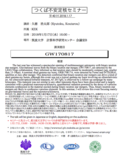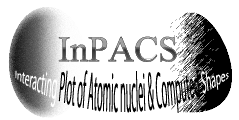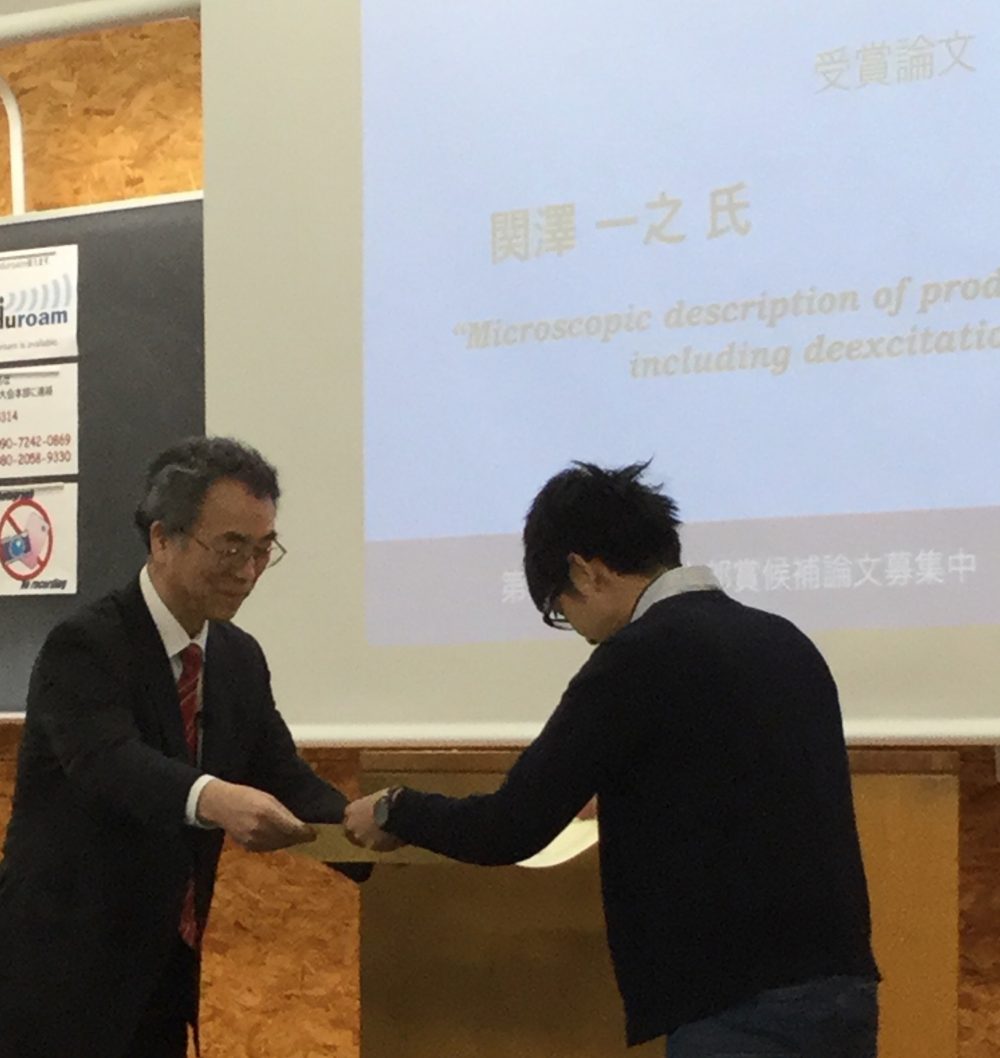つくば不安定核セミナー開催(2018.1.17)
| 新着情報
第40回つくば不安定核セミナーを2018年1月17日に筑波大学計算科学研究センターにおいて開催いたします。今回は、KEK理論センターの久徳浩太郎氏を講師にお迎えして、2017年に観測された中性子星合体の重力波観測について話して頂きます。
また、セミナーに先立ち、13:00-14:00, 14:30-15:30の予定で、同じ場所で、重力波天文学について非専門家向けの講義をして頂きます。
Lecturer: Koutarou Kyutoku (KEK)
Date/Time: January 17th (Wed), 2018, 16:00-
Place: Conference Room B (1F), Center for Computational Sciences, University of Tsukuba
Title: GW170917
Abstract: The last year has witnessed a spectacular opening of multimessenger astronomy with binary neutron star mergers. Gravitational waves from the binary neutron star merger, GW170817, are detected by the LIGO-Virgo collaboration. They informed us that neutron stars should be moderately compact (say, smaller than 13-14km). A nominal short gamma-ray burst, GRB170817A, were detected by Fermi and INTEGRAL satellites at 2sec after merger. This detection confirmed that binary-neutron-star mergers can drive a kind of short gamma-ray bursts, although this event was not a typical gamma-ray burst involving an ultrarelativistic jet. An ultraviolet/optical/infrared transient, AT 2017gfo, is observed by a follow-up campaign by many telescopes. This transient was not similar to any other transients those have been discovered and is largely consistent with a predicted marcronova/kilonova, quasithermal radiation powered by the decay of r-process elements synthesized in the material ejected during binary neutron star mergers. Thus, binary-neutron-star mergers are likely to synthesize r-process elements. In this seminar, I will review this event focusing mainly on gravitational waves and the macronova/kilonova.
* The talk will be given in Japanese or English, depending on the audience.
詳細はこちら。




